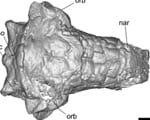“This area is heavily populated with oil and gas production equipment and installations, hazardous liquid pipelines, as well as two communities,” said study author Jin-Woo Kim in a press release. “A collapse could be catastrophic.”
Grist.org journalist Katie Herzog covered the research of SMU geophysicists Zhong Lu, professor, Shuler-Foscue Chair, and Jin-Woo Kim research scientist, both in the Roy M. Huffington Department of Earth Sciences at SMU. Herzog’s article, “Massive sinkholes in Texas could combine to form even massiver sinkhole,” published June 15, 2016.
The Dedman College faculty are co-authors of a new analysis using satellite radar images to reveal ground movement of two giant sinkholes near Wink, Texas. They found that the movement suggests the two existing holes are expanding, and new ones are forming as nearby subsidence occurs at an alarming rate.
Lu is world-renowned for leading scientists in InSAR applications, short for a technique called interferometric synthetic aperture radar, to detect surface changes that aren’t visible to the naked eye. Lu is a member of the Science Definition Team for the dedicated U.S. and Indian NASA-ISRO InSAR mission, set for launch in 2020 to study hazards and global environmental change.
InSAR accesses a series of images captured by a read-out radar instrument mounted on the orbiting satellite Sentinel-1A. Sentinel-1A was launched in April 2014 as part of the European Union’s Copernicus program.
Lu and Kim reported the findings in the scientific journal Remote Sensing, in the article “Ongoing deformation of sinkholes in Wink, Texas, observed by time-series Sentinel-1A SAR Interferometry.”
The research was supported by the U.S. Geological Survey Land Remote Sensing Program, the NASA Earth Surface & Interior Program, and the Shuler-Foscue Endowment at Southern Methodist University.
EXCERPT:
By Katie Herzog
Grist.org
Welcome to West Texas, where sometimes the ground just opens up under your feet.Two existing sinkholes — one in the adorably named town of Wink, the other in the absurdly named town of Kermit — are about a mile away from each other, but data suggests they might be expanding. Researchers from Southern Methodist University analyzed radar images of the area and found some hints of movement in the surrounding ground. If the sinkholes keep growing, it’s possible they will merge into one supermassive sinkhole.
And that would be a big problem indeed.
“This area is heavily populated with oil and gas production equipment and installations, hazardous liquid pipelines, as well as two communities,” said study author Jin-Woo Kim in a press release. “A collapse could be catastrophic.”
Sinkholes are not uncommon in this part of West Texas, thanks to the area’s prolific oil and gas industries. These particular sinkholes, however, are large even by Texas standards: The hole in Wink, which formed in 1980, is 361 feet across — or the length of a football field — and its neighbor in Kermit varies between 600 and 900 feet across. Both are over 100 feet deep.
Sinkholes occur when water dissolves bedrock over time, and then — sometimes suddenly — the ground collapses. They can be just a few feet across, or, like these ones, big enough to hold buildings. (A 2013 sinkhole opened up under the National Corvette Museum in Bowling Green, Ky., and swallowed eight classic cars.) And while sinkholes can form naturally, they are also created by human activity like oil and gas extraction.
Follow SMU Research on Twitter, @smuresearch.
For more SMU research see www.smuresearch.com.
SMU is a nationally ranked private university in Dallas founded 100 years ago. Today, SMU enrolls nearly 11,000 students who benefit from the academic opportunities and international reach of seven degree-granting schools. For more information, www.smu.edu.
SMU has an uplink facility located on campus for live TV, radio, or online interviews. To speak with an SMU expert or book an SMU guest in the studio, call SMU News & Communications at 214-768-7650.


 To request an interview with Zhong Lu call SMU News and Communications at 214-768-7650 or email SMU News at
To request an interview with Zhong Lu call SMU News and Communications at 214-768-7650 or email SMU News at  To request an interview with Jin-woo Kim call SMU News and Communications at 214-768-7650 or email SMU News at
To request an interview with Jin-woo Kim call SMU News and Communications at 214-768-7650 or email SMU News at  Early armored dino from Texas lacked cousin’s club-tail weapon, but had a nose for danger
Early armored dino from Texas lacked cousin’s club-tail weapon, but had a nose for danger SMU physicists: CERN’s Large Hadron Collider is once again smashing protons, taking data
SMU physicists: CERN’s Large Hadron Collider is once again smashing protons, taking data Nearby massive star explosion 30 million years ago equaled brightness of 100 million suns
Nearby massive star explosion 30 million years ago equaled brightness of 100 million suns Text in lost language may reveal god or goddess worshipped by Etruscans at ancient temple
Text in lost language may reveal god or goddess worshipped by Etruscans at ancient temple